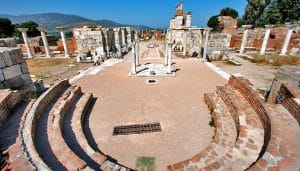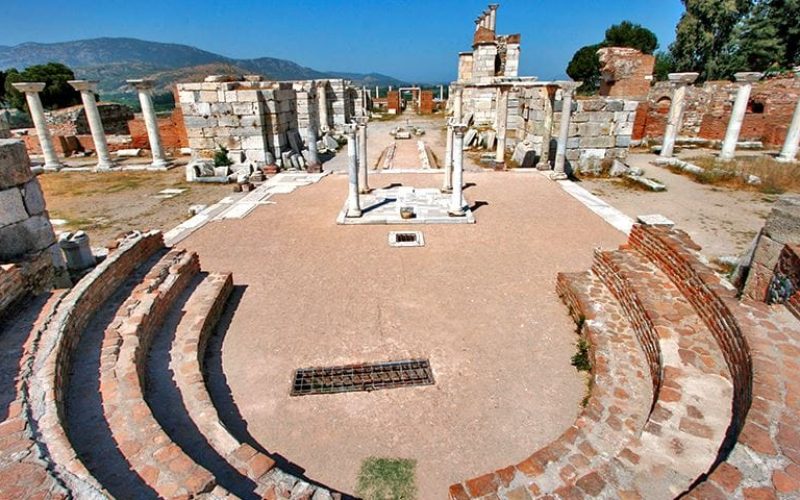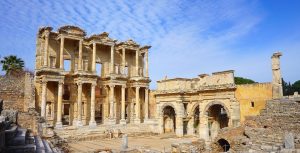The Basilica of St. John
According to the historian Eusebius, St John returned to Ephesus with Mary after being banished from Jerusalem between 37 and 42 A.D. He continued to write the Bible after a period he died here at Ephesus. Following his will, he was buried in the southern foothills of Ayasuluk Hill.
 The Basilica of St. John was constructed over the burial site of John the Apostle by Emperor Justinian in the 6th century. It is located on the slopes of Ayasuluk Hill just below the fortress near the center of Selcuk, Selcuk district, İzmir Province, Turkey, and about 3.5 km from Ephesus.
The Basilica of St. John was constructed over the burial site of John the Apostle by Emperor Justinian in the 6th century. It is located on the slopes of Ayasuluk Hill just below the fortress near the center of Selcuk, Selcuk district, İzmir Province, Turkey, and about 3.5 km from Ephesus.
First, a wooden-roofed Early Christian church was constructed in 5th AD. The monumental Basilica of St. John which had the shape of a cross and was covered with six domes was built in the 6th AD. The burial chamber was raised by two steps and covered with marble, the tomb of St. John was under the central dome, which was once carried by the four columns at the corners. The Monograms of Emperor Justinian are revealed by the columns in the courtyard. Ayasuluk Hill was encircled with walls constructed in the 7th – 8th centuries AD to protect the Basilica of St. John against Arabian raids.
The outer part of the walls was constructed from materials that were brought from the structures of Ephesus. In the interior, the church was decorated with impressive 10th-century AD frescoes representing St. John, Jesus, and a Saint, the chapel. The church was covered in mosaic while the walls and pillars were covered in marble plates and decorated in different colors. There were two square plan towers on the other side of the strong main entrance known as ‘The Gate of Pursuit. The arch entrance in the middle of these towers was ornamented with ivy frieze.
The belief that healing dust came out of a hole in the burial chamber of St. John as St. John was not dead in, but sleeping beneath his tomb, made the Basilica of St. John one of the most visited places of the Christian world all through the Middle Ages and caused people to come here in search of recovery from even far away lands.





